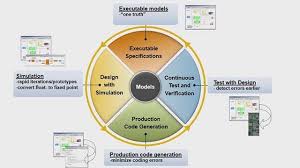White Paper: Leveraging MATLAB Embedded Coder for IoT Full-Stack Development
1. Introduction
The Internet of Things (IoT) has revolutionized industries by connecting physical devices to the digital world. MATLAB, a powerful mathematical computing environment, offers a comprehensive suite of tools for designing, simulating, and deploying IoT systems. MATLAB Embedded Coder is a key component of this ecosystem, enabling the automatic generation of C/C++ code from MATLAB algorithms, making it suitable for deployment on embedded devices. This white paper explores the role of MATLAB Embedded Coder in developing IoT full-stack solutions, from sensor data acquisition to cloud-based analytics and control.
2. IoT Full-Stack Architecture
A typical IoT full-stack architecture comprises several layers:
- Device Layer: Consists of sensors, actuators, and microcontrollers that collect and process data.
- Network Layer: Handles communication between devices and the cloud, often using wireless protocols like Wi-Fi, Bluetooth, or cellular networks.
- Edge Layer: Processes data locally on edge devices, reducing network traffic and latency.
- Cloud Layer: Stores, processes, and analyzes large volumes of data, enabling advanced analytics and machine learning.
- Application Layer: Provides user interfaces and applications to interact with the IoT system.
3. MATLAB Embedded Coder's Role in IoT
MATLAB Embedded Coder plays a crucial role in several stages of IoT development:
3.1 Device Layer
- Algorithm Development: MATLAB's high-level syntax and rich toolboxes facilitate rapid prototyping of signal processing, control, and machine learning algorithms.
- Code Generation: MATLAB Embedded Coder automatically generates optimized C/C++ code from MATLAB algorithms, suitable for deployment on microcontrollers and FPGAs.
- Hardware Integration: MATLAB supports integration with various hardware platforms, including Arduino, Raspberry Pi, and Texas Instruments microcontrollers.
3.2 Edge Layer
- Edge Computing: MATLAB enables the development of edge computing applications, such as real-time anomaly detection and predictive maintenance.
- Code Optimization: MATLAB Embedded Coder generates efficient code, minimizing memory footprint and maximizing performance on resource-constrained edge devices.
3.3 Cloud Layer
- Data Analytics: MATLAB can be used to analyze and visualize large datasets from IoT devices.
- Machine Learning: MATLAB's machine learning toolbox allows the development of advanced machine learning models for IoT applications.
- Cloud Deployment: MATLAB code can be deployed to cloud platforms like AWS, Azure, and GCP.
4. Benefits of Using MATLAB Embedded Coder for IoT
- Rapid Prototyping: MATLAB's high-level syntax and interactive environment accelerate development.
- Code Efficiency: MATLAB Embedded Coder generates optimized C/C++ code, improving performance and reducing memory usage.
- Hardware Flexibility: MATLAB supports a wide range of hardware platforms, enabling deployment on diverse IoT devices.
- Seamless Integration: MATLAB integrates with other tools and frameworks, facilitating a comprehensive IoT development workflow.
- Reduced Development Time and Cost: MATLAB's automation capabilities and streamlined workflow reduce development time and cost.
5. Real-world Applications
MATLAB Embedded Coder has been applied to various IoT applications, including:
- Smart Agriculture: Monitoring soil moisture, temperature, and other environmental factors.
- Industrial IoT: Predictive maintenance, quality control, and energy efficiency.
- Smart Cities: Traffic management, air quality monitoring, and smart lighting.
- Wearable Devices: Health monitoring, fitness tracking, and sports performance analysis.
6. Conclusion
MATLAB Embedded Coder is a powerful tool for developing IoT full-stack solutions. By leveraging its capabilities, engineers can accelerate development, improve code quality, and deploy innovative IoT applications. As the IoT landscape continues to evolve, MATLAB Embedded Coder will remain a valuable asset for creating cutting-edge solutions.
References:
- MathWorks: https://www.mathworks.com/help/ecoder/
- MATLAB Product Family: https://www.mathworks.com/solutions/internet-of-things.html
- Signal Processing Toolbox: https://www.mathworks.com/products/control.html
- Machine Learning Toolbox:
By effectively utilizing MATLAB Embedded Coder, engineers can streamline the IoT development process and deliver high-quality, efficient, and innovative solutions.



